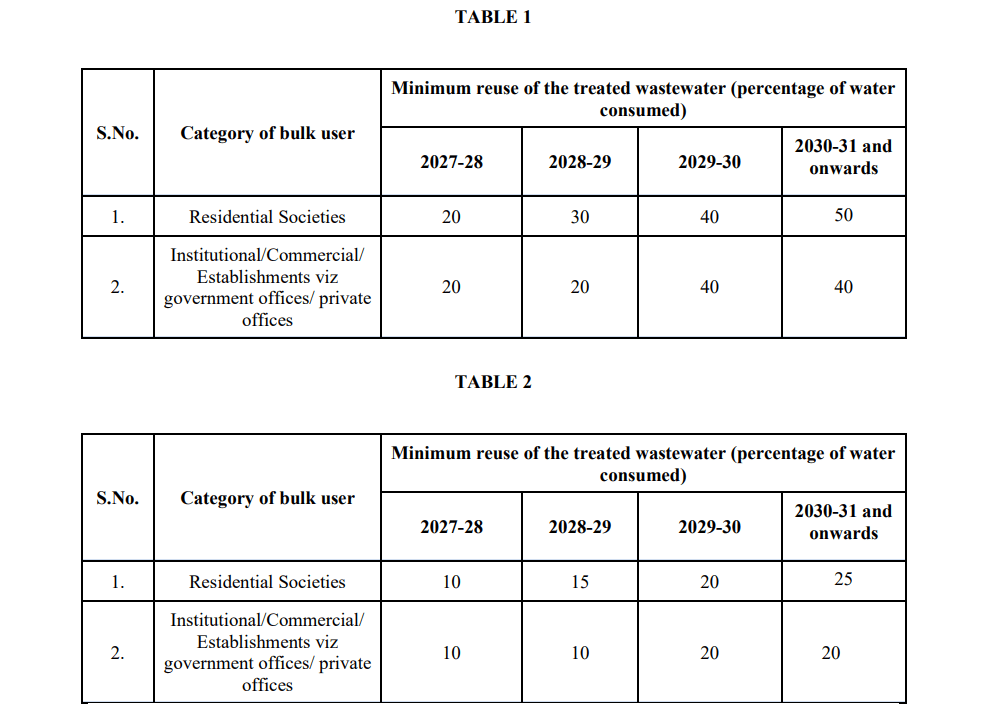What if we had clean rivers, thriving lakes, and no foul-smelling drains ruining our morning walks? Sounds too good to be true? The new Draft Liquid Waste Management Rules, 2024 raise hopes for the same, though. With the new rules, the government has set the stage for a cleaner and more sustainable future—and urban citizens are at the heart of this transformation.

Why do these rules matter?
India’s cities produce staggering amounts of liquid waste every day — from residential sewage to industrial effluents — and much of it flows untreated into rivers, lakes, or groundwater. This careless approach has led to a double-edged crisis: dwindling freshwater supplies and rising health risks from contamination. The new rules aim to change this by making every stakeholder — from households to industries — accountable for the liquid waste they generate.
Read more: Solid waste management in Mumbai: Looking back at the last five years
Up until now India didn’t have any regulation that dealt with liquid waste specifically. The Water (Prevention and Control of Pollution) Act of 1974 was India’s first and only comprehensive law to address water pollution which established Central and State Pollution Control Boards to regulate pollutants and enforce compliance.
The Act required industries to seek consent for effluent discharge and adhere to strict standards with penalties for violations. But despite its wide framework, challenges such as enforcement gaps and rising pollution levels led to calls for stricter regulations and more innovative solutions to tackle modern water crises.
Key provisions of the Draft Liquid Waste Management Rules
Under the new framework, households, institutions and industries must ensure their wastewater is treated or responsibly disposed of. Septic tank sludge can no longer be dumped indiscriminately, and untreated water must not find its way into public drains.
For bulk water users, i.e. those consuming over 5,000 litres of water daily — such as apartment complexes, commercial establishments and industries — registration with local authorities is now mandatory. This is to ensure compliance with wastewater treatment and reuse norms. These users must either treat wastewater on-site or tie up with certified treatment facilities.
Another significant shift is the push for reusing treated water. Industries, housing societies and public institutions are encouraged to adopt water recycling measures such as using treated water for gardening, cleaning or cooling systems. The draft sets a target for bulk users for minimum reuse of treated wastewater i.e., 20% by 2027-28 which is sought to be increased to 50% by 2030-31.


Read more: The journey of waste: Ever wondered where all the trash in Chennai ends up?
The rules place strong emphasis on decentralisation and transparency. Treatment plants are required to upload monthly data on water quality to a centralised portal, thus allowing regulatory authorities like State Pollution Control Boards to monitor compliance. Municipalities are tasked with creating robust systems for the collection, treatment and disposal of wastewater. This ensures that untreated water does not re-enter the environment under the guise of compliance. For urban residents, this means greater accountability from those managing their wastewater.
Stakeholder responsibilities
Here is a quick reference table outlining the specific steps and responsibilities for key categories of urban stakeholders under the new framework:
| Stakeholder Category | Responsibilities and Changes |
| Apartment complexes & Other Bulk Users, such as industries (assuming that they are consuming over 5,000 litres of water) | Ensure on-site wastewater treatment or tie-up with certified facilities to prevent discharge of untreated water in water bodies. Reuse treated water for gardening and cleaning and attain the reuse target of 20% by 2027-28 and 50% by 2030-31. Monitor and report compliance to local authorities monthly. |
| Individual house owners (assuming they are not consuming over 5,000 litres of water) | Safely dispose of septic tank sludge through certified facilities after coordination with local authorities. Avoid direct discharge of untreated water into drains. |
| Small businesses (Shops, Eateries, etc.) (assuming they are not consuming over 5,000 litres of water) | Set up small-scale treatment systems wherever possible. It is not mandated but encouraged. Tie up with municipal or certified facilities for safe disposal of waste waters. Reduce and recycle wastewater wherever possible. |
| Local Bodies | Develop robust systems for wastewater collection, treatment and disposal. Map wastewater treatment needs annually. Monitor compliance through centralised portals and ensure transparency. |
The way forward
The new rules present an exciting opportunity for urban innovation by focusing on decentralised treatment systems and water recycling technologies. These measures could enable apartment complexes and local businesses to take the lead in sustainability. While the initial costs of compliance may seem significant, the potential long-term benefits — reduced water bills, cleaner neighbourhoods and healthier ecosystems — make these changes promising for the future.
Read more: Bengaluru knows the solutions to waste problems, but looks the other way
Legislation, however, reveals its true potential only when grounded in local realities. The success of these rules depends on collaboration at every level. Citizens, businesses, and government bodies must take collective ownership of the urban spaces they inhabit. By holding every stakeholder accountable and prioritising sustainability, the framework offers a transformative vision for cleaner water bodies and healthier urban living.
You can read more about the draft rules here.
Dear Bristi, thank you for sharing such a detailed note on the most important topic which deserves everyone’s attention not only from a knowledge perspective but also for a better future for our next generation.. thanks a lot for sharing.. all the very best !! regards
Your thoughtful and well-crafted document on the Draft Liquid Waste Management Rules, 2024 is truly inspiring. It captures the urgency and significance of this critical issue while presenting a clear and optimistic vision for a cleaner, more sustainable urban future. Your emphasis on accountability, innovation, and community involvement showcases a deep understanding of the challenges and solutions. Keep up the amazing work—it’s contributions like yours that drive meaningful change!